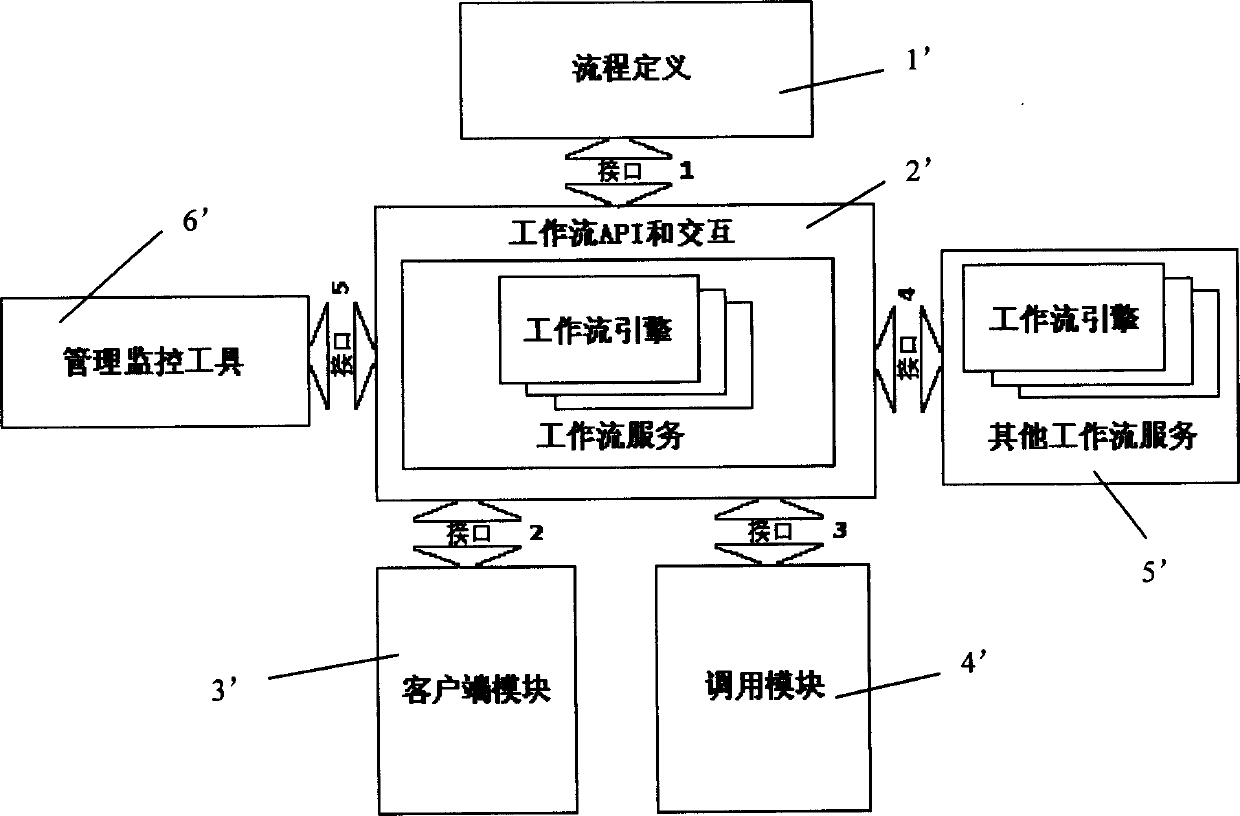Data driving method in work flow managing system
A workflow management and data-driven technology, applied in data processing applications, resources, computing, etc., can solve problems such as too many processes, huge processes, and complicated situations, and achieve the effect of reducing the number of processes and solving abnormal processes
- Summary
- Abstract
- Description
- Claims
- Application Information
AI Technical Summary
Problems solved by technology
Method used
Image
Examples
Embodiment 1
[0093] Embodiment 1, Process Abnormal Solution
[0094] Such as Figure 7 shown, which is image 3 In the data-driven version of the phone installation process shown, it can be seen that all the work order links in the figure have become data-driven tasks, and a task has been added at the same time: calculating data; and from calculating data to three work order links In addition to the original connection, there are more data connections described in the present invention, in the figure as express.
[0095] The calculation data task is used to calculate the request data of the work order. These request data are sent to the three work order links through the data connection, and the work order link uses these data to determine whether there are actually tasks and how many tasks there are.
[0096] The process is roughly described as follows: when the process starts, the goal is to install a new phone, and a phone consists of three work orders, and three work order requests a...
Embodiment 2
[0098] Embodiment 2: Solution to too many processes
[0099] Installation process with a phone (see image 3 ) and transfer process in the same office (see Figure 4 ) as an example, they can be combined into Figure 7 process shown. For telephone installation, the calculation data will generate 3 data requests, corresponding to 3 work orders; for telephone transfer in the same office, the calculation data only generates 1 data request, corresponding to the outside line construction work order, because the phone number has not changed.
[0100] Similarly, the phone number change process, phone dismantling process, phone cross-office transfer process, etc. can also be merged, so in fact, all the phone processes can be merged into Figure 7 In the data-driven flow shown.
[0101] Through process merging, the number of processes is greatly reduced, and the workload of process development, management, and maintenance is also greatly reduced.
Embodiment 3
[0102] Embodiment 3, batch processing solution
[0103] Assumption: For batch installation of phones, a batch installation order is generated, which contains several sub-orders, that is, a sub-order is generated for each phone in this batch.
[0104] Such as Figure 8 As shown, it is the process of batch installation of phones, the data connection configuration and Figure 7 same.
[0105] The data connection sends the sub-order of the batch order as a data request to the node installation sub-process, and the installation sub-process is a data-driven sub-process node, and each data request (that is, a sub-order) will start a phone installation process. So how many sub-orders there are in the batch order, how many processes will be started. In this way, we have easily solved the problem of batch orders.
[0106] Using the data-driven method in a workflow management system provided by the present invention, in the workflow management system, the problems of process abnormal...
PUM
 Login to View More
Login to View More Abstract
Description
Claims
Application Information
 Login to View More
Login to View More - R&D
- Intellectual Property
- Life Sciences
- Materials
- Tech Scout
- Unparalleled Data Quality
- Higher Quality Content
- 60% Fewer Hallucinations
Browse by: Latest US Patents, China's latest patents, Technical Efficacy Thesaurus, Application Domain, Technology Topic, Popular Technical Reports.
© 2025 PatSnap. All rights reserved.Legal|Privacy policy|Modern Slavery Act Transparency Statement|Sitemap|About US| Contact US: help@patsnap.com



